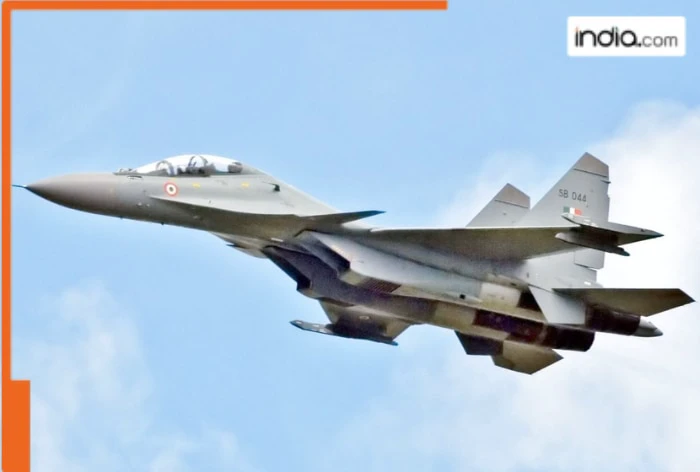Sukhoi Su-30 MKI upgrade: In a massive development for India’s air superiority amid the global rise in conflicts, India has announced a massive Rs 66,829 crore “Super-30” upgrade project for its fleet of Su-30MKI fighter jets.
Seen as a step towards significantly outperforming Pakistan’s F-16s fighter jets, the Su-30MKI fighter jets upgrade will include the integration of DRDO’s indigenous Virupaksha AESA radar built on GaN technology, making it capable of simultaneous tracking and engagement of multiple threats during the course of a conflict. Here are all the details you need to know about the Rs 66,829 crore Su-30MKI fighter jet upgrade.
What upgrades will be made to Su-30MKI fighter jet?
In addition to these upgrades, the Su-30MKI will also have several upgrades like the BrahMos-A cruise missiles and Rudram-II anti-radiation missiles, significantly enhancing its strike capabilities against land and radar targets.
As per media reports, India will upgrade 84 Su-30MKI jets under the $2.4 to $7.8 billion (around Rs 66,829 crore) Super-30 program to enhance combat capabilities over the next 3-4 years.
Defence Minister Rajnath Singh discusses supply of S-400 systems and Su-30 MKI upgrades
Defence Minister Rajnath Singh held a meeting with his Russian counterpart Andrey Belousov on the sidelines of Shanghai Cooperation Organisation (SCO) Defence Ministers’ Meeting in China’s Qingdao and discussed supply of S-400 systems, Su-30 MKI upgrades, and procurement of critical military hardware in expeditious timeframes, a report by ANI news agency said.
In a press release, Ministry of Defence stated, “It was one of the most important recent meetings between the leaders of the two nations, being held in the backdrop of Operation Sindoor and the consequent necessity of augmenting defence production, especially in critical items such as air defence, air-to-air missiles, modern capabilities, and upgrades of air platforms.
“Supply of S-400 systems, Su-30 MKI upgrades, and procurement of critical military hardware in expeditious timeframes were some of the key takeaways of the meeting,” it added.
